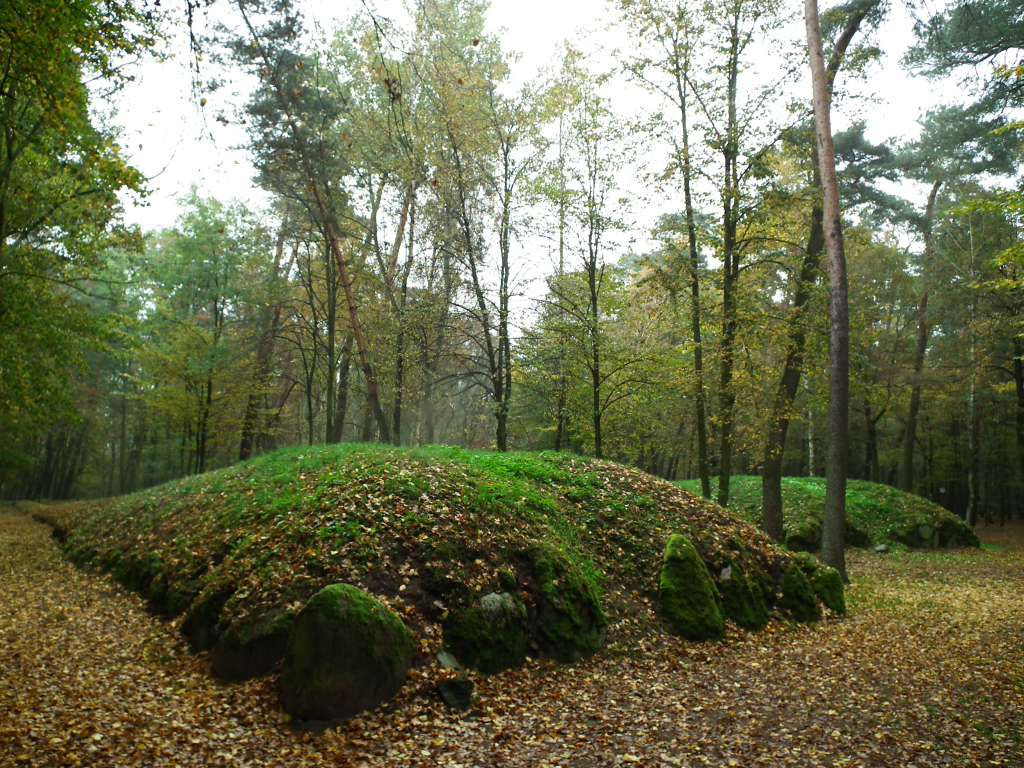
History is being rewritten in west-central Poland, as two enormous earth mounds whose existence predates Egypt’s Great Pyramid have been uncovered beneath the forest canopy. With high-tech laser scanning, this find not only predates the Giza pyramid by almost a thousand years but also turns established preconceptions regarding the advanced state of Europe’s earliest monument-makers on their head.

The so-called “Polish pyramids” are not just archaeological curiosities; they are a testament to the wit, foresight, and spiritual creativity of Neolithic cultures whose greatness has lain hidden for millennia. As excavations continue to uncover and technology continues to remove the veils long covering secrets, these mounds have the capacity to transform our picture of ancient engineering, social hierarchy, and the ongoing dialogue between past and present.

1. The Polish Pyramids: Older Than Giza, Rivaling Stonehenge
The newly discovered mounds at Wyskoć, over 650 feet long and 13 feet high, are at least 5,500 years old some 900 years older than Egypt’s Great Pyramid constructed by Khufu. They were built between 3550 BCE and 3450 BCE, as confirmed by radiocarbon dating, which rendered them some of the oldest monumental tombs in all of Europe. Their size and shape, east-west alignment and trapezoidal form, are a reminder of the splendor at places such as Stonehenge, but are quite little-known beyond specialist circles. As discussed by Artnet, these mounds are not only old but also “rival other prehistoric sites like Stonehenge” in their size and complexity.

2. Funnelbeaker Culture: Egalitarian Farmers, Monumental Builders
The Funnelbeaker culture built these pyramids, which was a Neolithic culture thriving between contemporary Poland, Denmark, and Germany from 4300 BCE to 2800 BCE. Although reported to be egalitarian Funnelbeaker cultures, their pyramid structures in tombs were made for persons who were of high status like leaders, priests, or shamans an indication of the establishment of social hierarchies in which otherwise there had been communal settlements. The orientation of the barrows east-west also replicated the direction of Funnelbeaker housing, implying cosmological considerations equating daily life with the sun’s path. As Artur Golis explained to the Polish Press Agency, “Each generation built its own megalith, honouring the leader, priest, or shaman who guided them.”

3. Engineering Feats: Moving Ten-Ton Stones Without Metal Tools
Building these colossal mounds was accomplished through great coordination and technical prowess. The builders, archaeologists discovered, capped the mounds with cobblestones and placed boulders weighing up to 10 tons at the entrance accomplished with no metal and wheeled transportation. It is a testament not just to cooperation but to a sense of familiarity with things and logistics. The trapezoid, with the broad east-facing end, is a symbol of and efficient shape, as repeated in analogous Neolithic monuments throughout Europe. The size of the buildings is a humbling reminder that Neolithic society had engineering skill on par with that of subsequent civilizations.

4. LiDAR and Machine Learning: Technology Unlocks the Past
Detection of the Polish pyramids was achieved utilizing airborne LiDAR surveys capable of penetrating dense forest covers to expose faint topographic irregularities. Scientists at the Adam Mickiewicz University employed the laser scans to find the exact outlines of the mounds, which earlier had not been visible to the naked eye. In a recent study, the combination of LiDAR with machine-learning programs like Random Forest allows archaeologists to find and document archaeological structures with unprecedented accuracy even in landscapes that have been drastically altered through agriculture or erosion. This method has already found more than 1,200 probable barrows in Greater Poland alone.

5. Ritual, Grave Offerings, and Lost Burials
The excavations of Wyskoć have thus far revealed shards of pottery, a polish flint axehead, and remnants of a stone circle remains of ritual equipment for one elite burial. Even though the human skeletons would probably have perished, researchers expect to discover additional grave offerings, for example, copper jewelry or cups containing opium residue, that would provide them with information on the Funnelbeaker individuals’ beliefs, skills, and trade interactions. As Artur Golis wrote, “Potentially, these could include stone axes, hatchets, pottery, or characteristic clay vessels.” They provide a view into Neolithic Europe’s ritual life and extensive trading networks.

6. The Challenge of Preservation in the Face of Modern Agriculture
Though historically important, the Polish pyramids are situated in an intensely cultivated area where heavy machinery regularly traverses the land. Heritage managers have restricted a temporary exclusion zone but long-term conservation and tourist facilities are far from assured. The struggle between conservation and economic development continues, with farmers fearing they will lose productive land and regional planners weighing the prospect of cultural tourism. Their future, like most archaeological sites, is in the balance of balancing heritage conservation with modern pressures.

7. Continental Context: A New Map of Europe’s Ancient Monuments
The Wyskoć mounds belong to a broader Neolithic pattern of monument creation that spans across Europe. Hundreds of thousands of newly discovered features, ranging from French burial mounds to Britain’s stone circles, have been added to the map through recent LiDAR and remote sensing campaigns. These findings are reshaping our vision for how early agricultural cultures designed their landscapes, delimited territory, and indicated group identity. As increasingly large numbers of sites are digitized and saved, Europe’s oldest structures are being folded into a new, continent-wide narrative of innovation, resilience, and memory.

The finding of Poland’s 5,500-year-old pyramids is more than a splashy press announcement it is a rich reminder of the imagination and complexity of Europe’s earliest farmers. By a blend of advanced technology and meticulous excavation, these monuments are reasserting themselves to the tale of human civilization. Even as controversy over preservation and use smolders, Wyskoć’s lessons ring across centuries apart: ancient accomplishments prevail, waiting to be rediscovered, and their heritage is fashioned as much by today as by far-distant past.


